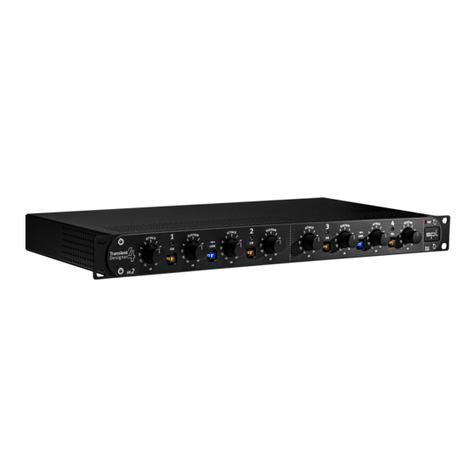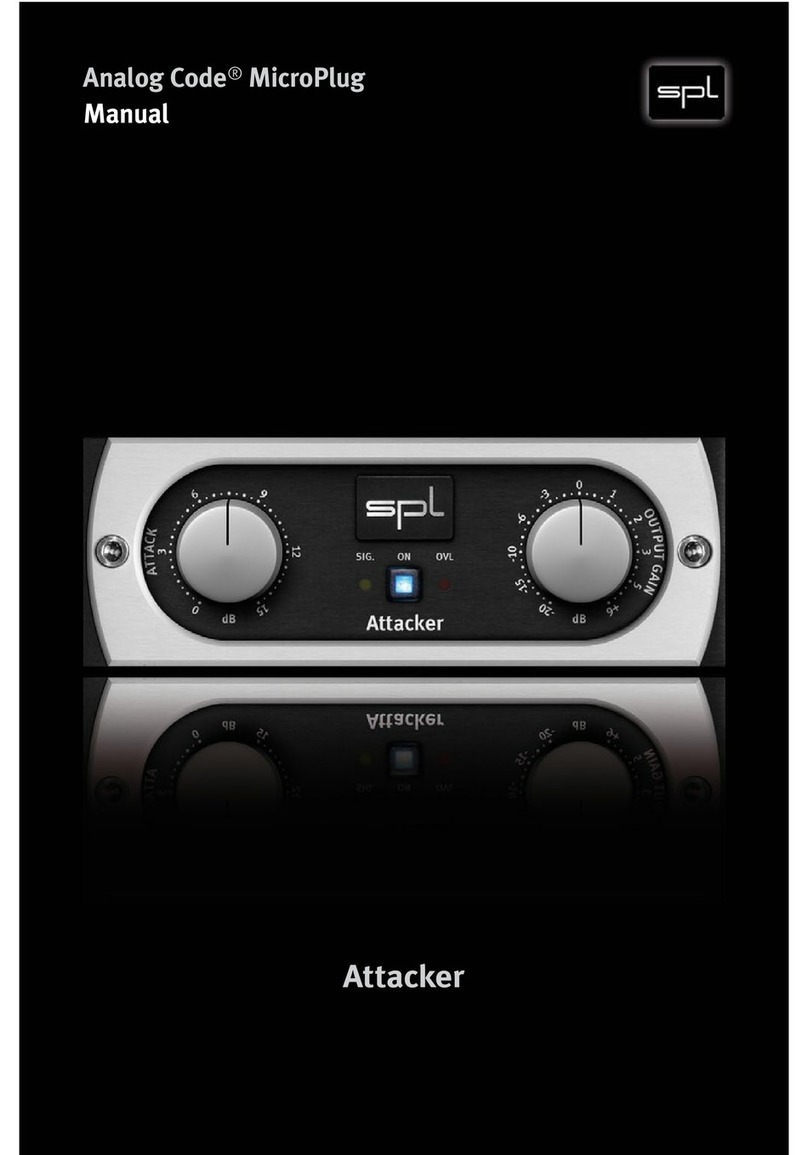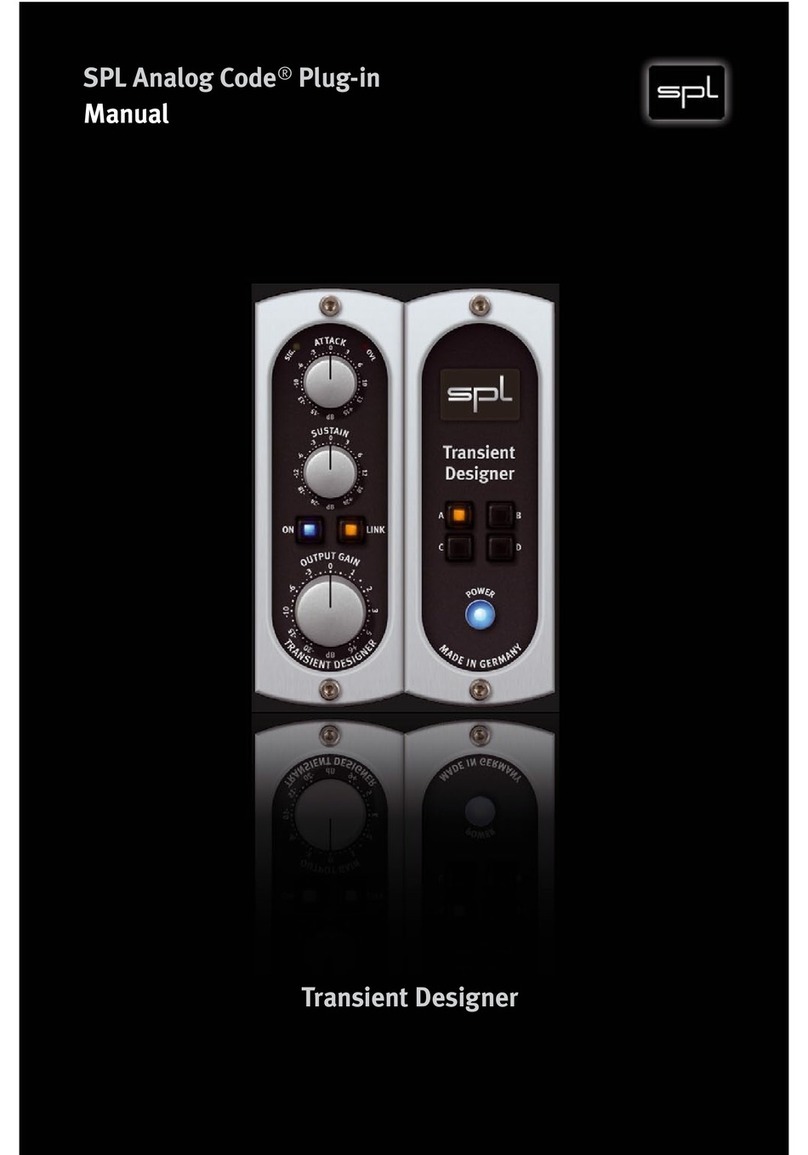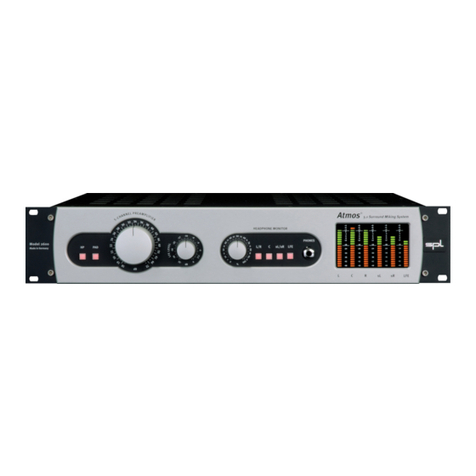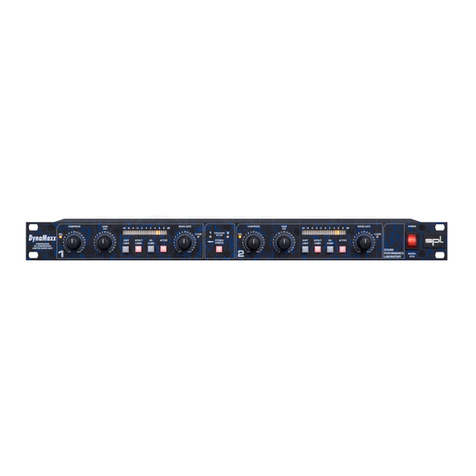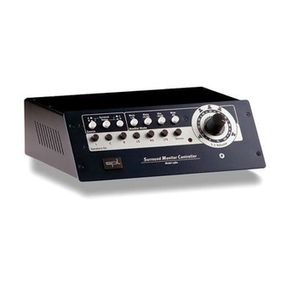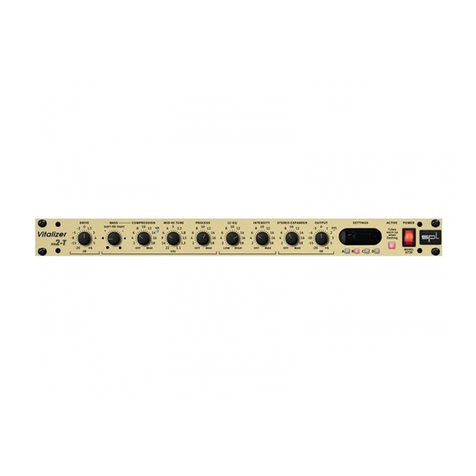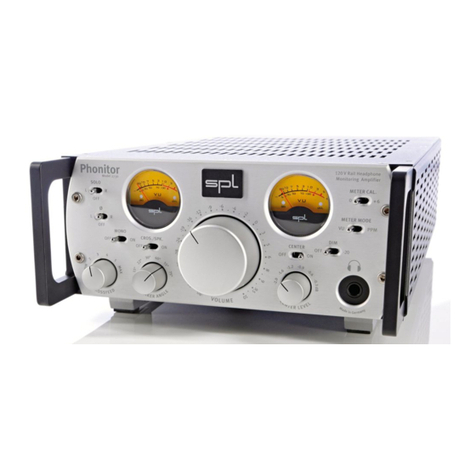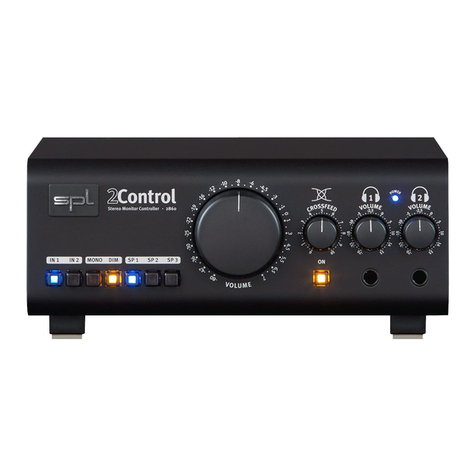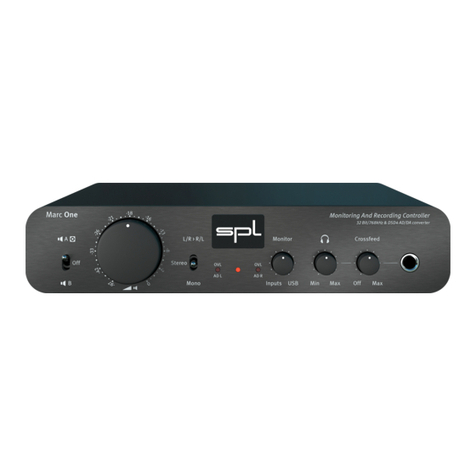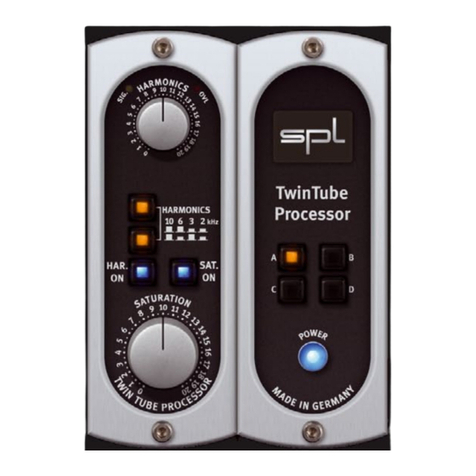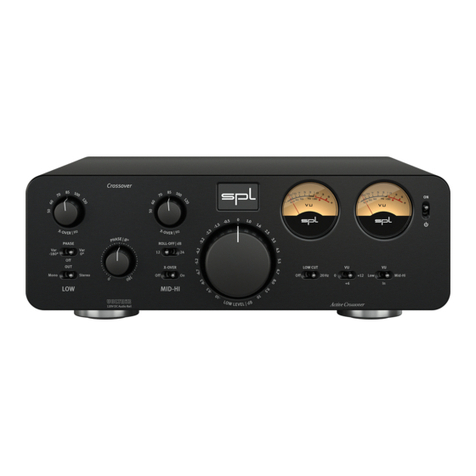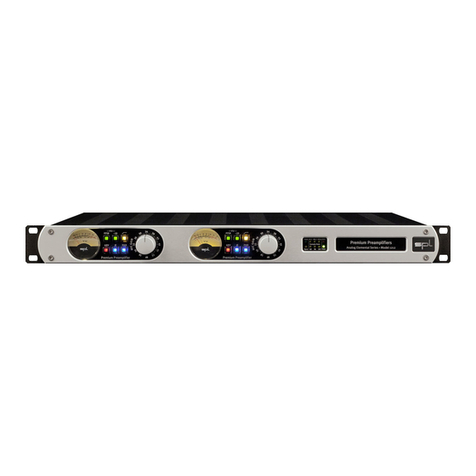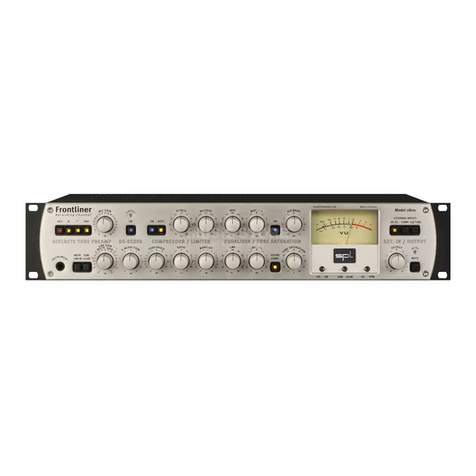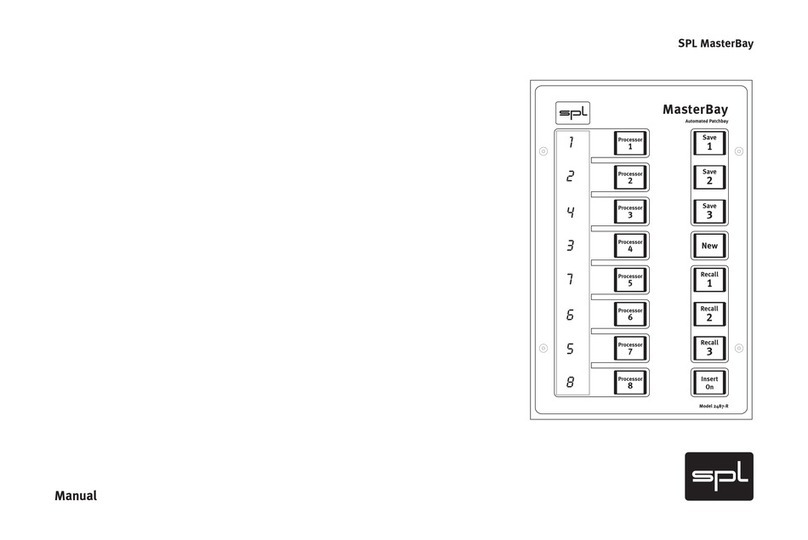2RackPack: Transient Designer
Manual Transient Designer Model 2715
Version 1.2 – 5/2011
Designer: Vincenzo Triolo
This user's guide contains a description of the product. It in no way represents
a guarantee of particular characteristics or results of use. The information in
this document has been carefully compiled and verified and, unless otherwise
stated or agreed upon, correctly describes the product at the time of packaging
with this document.
Sound Performance Lab (SPL) continuously strives to improve its products and
reserves the right to modify the product described in this manual at any time
without prior notice. This document is the property of SPL and may not be cop-
ied or reproduced in any manner, in part or fully, without prior authorization by
SPL.
SPL electronics GmbH, Sohlweg 55, 41372 Niederkruechten, Germany
Phone. +49 (0) 2163 983 40
Fax +49 (0) 2163 983 420
Email: info@spl.info
Internet: spl.info
CE Declaration of Conformity
Manufacturer: SPL electronics GmbH, Type of Equipment: Audio Signal
Processor, Product: RackPack/Transient Designer, Model 2715, Compliance
Engineer: Wolfgang Neumann
Test Basis: EN50081-1:1992, EN50082-1:1992, EN60065:1993,
EN61000-3-3:1995, EN60065:2002, EN55013:2001, EN55020:2002,
EN61000-3-2:2000, 73/23 EWG; 93/68 EWG.
We herewith declare, that the construction of the Transient Designer, Model
2715, is in compliance with the standards and regulations mentioned above.
Notes on environmental protection
At the end of its operating life, this product must not be disposed of
with regular household waste but must be returned to a collection
point for the recycling of electrical and electronic equipment. The
“wheelie bin“ symbol on the product, user‘s manual and packaging
indicates that. The materials can be re-used in accordance with their
markings. Through re-use, recycling of raw materials, or other forms of recycling
of old products, you are making an important contribution to the protection of
our environment. Your local administrative office can advise you of the respon-
sible waste disposal point.
WEEE Registration: 9 7 3 3 49 8 8
© 2011 SPL electronics GmbH. All rights reserved. Names of other companies
and their products are trademarks of their respective owners.

